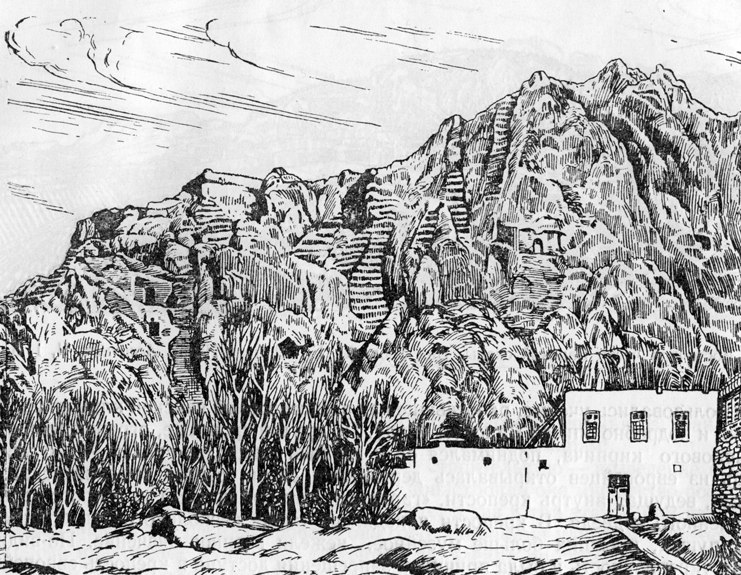Friedrich Eduard Schulz on:
[Wikipedia]
[Google]
[Amazon]

 Friedrich Eduard Schulz (1799–1829, also known as Friedrich Edward Schulz) was a German
Friedrich Eduard Schulz (1799–1829, also known as Friedrich Edward Schulz) was a German
Biography of F.E. Schulz
German archaeologists 1799 births 1829 deaths German orientalists University of Giessen faculty {{Germany-academic-bio-stub

 Friedrich Eduard Schulz (1799–1829, also known as Friedrich Edward Schulz) was a German
Friedrich Eduard Schulz (1799–1829, also known as Friedrich Edward Schulz) was a German philosopher
A philosopher is a person who practices or investigates philosophy. The term ''philosopher'' comes from the grc, φιλόσοφος, , translit=philosophos, meaning 'lover of wisdom'. The coining of the term has been attributed to the Greek th ...
and orientalist, who was one of the first to uncover evidence of the Kingdom of Urartu
Urartu (; Assyrian: ',Eberhard Schrader, ''The Cuneiform inscriptions and the Old Testament'' (1885), p. 65. Babylonian: ''Urashtu'', he, אֲרָרָט ''Ararat'') is a geographical region and Iron Age kingdom also known as the Kingdom of V ...
.
Research on Urartu
In 1827, the French scholarAntoine-Jean Saint-Martin
Antoine-Jean Saint-Martin (17 January 1791 – 17 July 1832) was a French academic, orientalist, and pioneer in the field of what would be known as Armenian Studies.
Biography
Antoine-Jean Saint-Martin was born in Paris on 17 January 1791, th ...
recommended that his government send Schulz, then a young professor at the University of Giessen
University of Giessen, official name Justus Liebig University Giessen (german: Justus-Liebig-Universität Gießen), is a large public research university in Giessen, Hesse, Germany. It is named after its most famous faculty member, Justus von L ...
, to the area around Lake Van
Lake Van ( tr, Van Gölü; hy, Վանա լիճ, translit=Vana lič̣; ku, Gola Wanê) is the largest lake in Turkey. It lies in the far east of Turkey, in the provinces of Van and Bitlis in the Armenian highlands. It is a saline soda lake ...
in what is now eastern Turkey on behalf of the French Oriental Society. Schulz discovered and copied numerous cuneiform
Cuneiform is a logo-syllabic script that was used to write several languages of the Ancient Middle East. The script was in active use from the early Bronze Age until the beginning of the Common Era. It is named for the characteristic wedge-sha ...
inscriptions, partly in Assyria
Assyria (Neo-Assyrian cuneiform: , romanized: ''māt Aššur''; syc, ܐܬܘܪ, ʾāthor) was a major ancient Mesopotamian civilization which existed as a city-state at times controlling regional territories in the indigenous lands of the A ...
n and partly in a hitherto unknown language. Schulz also re-discovered the Kelishin stele, bearing an Assyrian-Urartian bilingual inscription, located on the Kelishin
Kelashin ( ku, Kelaşin ,کهلاشن) is a mountain village in Kurdistan Region Iraq, near the Kelashin Pass (2,981m) to Iran, some 80 km south-west of Lake Urmia.
The Kelashin Stele found there bears an important Urartian-Assyrian
As ...
pass on the current Iraqi-Iranian border. A summary account of his initial discoveries was published in 1828. Schultz remained in the region, and was murdered along with two Persian
Persian may refer to:
* People and things from Iran, historically called ''Persia'' in the English language
** Persians, the majority ethnic group in Iran, not to be conflated with the Iranic peoples
** Persian language, an Iranian language of the ...
army officers and four of his servants by Kurds ug:كۇردلار
Kurds ( ku, کورد ,Kurd, italic=yes, rtl=yes) or Kurdish people are an Iranian ethnic group native to the mountainous region of Kurdistan in Western Asia, which spans southeastern Turkey, northwestern Iran, northern Ir ...
in 1829 near Başkale
Başkale ( ku, Elbak, hy, Ադամակերտ, translit=Adamakert) is a town and district located in south-eastern Turkey in Van Province. There is one municipality in the Başkale district, the town centre, which was established in 1937. The ne ...
.
Schultz was murdered while in Kurdistan
Kurdistan ( ku, کوردستان ,Kurdistan ; lit. "land of the Kurds") or Greater Kurdistan is a roughly defined geo-cultural territory in Western Asia wherein the Kurds form a prominent majority population and the Kurdish culture, Kurdish la ...
in 1829.Potts, D. T. (2017). Achievement and Misfortune: On the Life and Death of Friedrich Eduard Schulz (1799–1829). Journal Asiatique, 305(2), 249-270. https://www.academia.edu/36109598/Potts_2017_-_Achievement_and_misfortune_On_the_life_and_death_of_Friedrich_Eduard_Schulz_1799-1829_._Journal_Asiatique_305_2_249-270 After Schultz's death, his papers, containing 42 inscriptions found at Van Castle
The Fortress of Van (Armenian: Վանի Բերդ, also known as Van Citadel; ku, Kela Wanê; tr, Van Kalesi) is a massive stone fortification built by the ancient kingdom of Urartu during the 9th to 7th centuries BC, and is the largest example ...
and in its neighborhood, were recovered and published in Paris in 1840. This was some of the first original information on Urartu
Urartu (; Assyrian: ',Eberhard Schrader, ''The Cuneiform inscriptions and the Old Testament'' (1885), p. 65. Babylonian: ''Urashtu'', he, אֲרָרָט ''Ararat'') is a geographical region and Iron Age kingdom also known as the Kingdom of Va ...
to appear in Europe.
References
Further reading
Biography of F.E. Schulz
German archaeologists 1799 births 1829 deaths German orientalists University of Giessen faculty {{Germany-academic-bio-stub